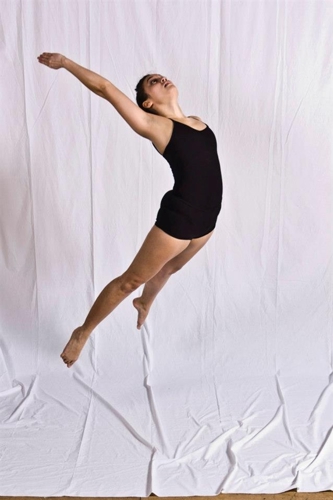First IADMS Blog Post! - How to stretch for dance class
Author: K. Michael Rowley
WELCOME TO THE IADMS BLOG !
The purpose of the IADMS blogs are to connect the public – the dancing public, the teaching public, the researching public, the clinical public – with current happenings in the field of dance medicine and science, in order to promote educational, medical, and scientific excellence. For more information see www.iadms.org/blog. For now, let's jump right in with a research study published in the Journal of Dance Medicine and Science.

Photo Credit: Dan Dunlap, Pamela Oppenheimer
Sitting and stretching passively or stretching with repetitive motion - which is safer for a pre-class stretch? Personally, I've been told to stay away from "ballistic", or dynamic, stretching and instead to spend at least 30 seconds in a stationary, or static, stretch position. Research by dance scientists, however, says that's not the optimal technique to maximize safety and performance in class.
Niamh Morrin at the University of Bedforshire and Emma Redding at Trinity Laban conducted a study published in the Journal of Dance Medicine and Science in 2013 about stretching techniques during a dance class warmup. They found that their ten dancers performed best when both static stretches and dynamic stretches were done after a cardiovascular warmup. What does "performed best" mean for these researchers? Their subjects had significantly higher jump heights, better balance, and more range of motion in their hamstring muscles. It appears that the warning I have always received about avoiding ballistic stretching, however, is not entirely off base. When their subjects did only dynamic stretches and left out the static ones, they actually showed decreased range of motion in the hamstrings. On the flip side, when they did only static stretching subjects failed to show improvement in balance or jump height.
References:
Morrin's and Redding's conclusion? "...a cardiovascular warm-up, followed by 30 seconds static stretches, followed by 30 seconds dynamic stretches, provides the optimum performance of vertical jump, balance, and hamstring range of motion."
Morrin N, Redding E. Acute effects of warm-up stretch protocols on balance, vertical jump height, and range of motion in dancers. J Dance Med Sci. 2013;17(1):34-40. http://dx.doi.org/10.12678/1089-313X.17.1.34